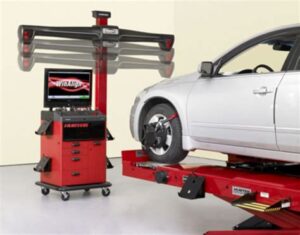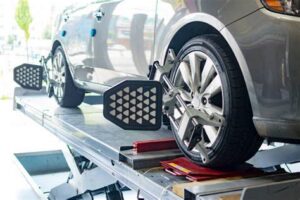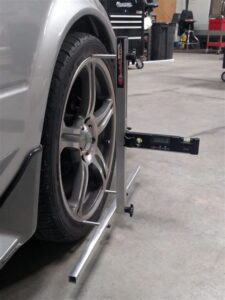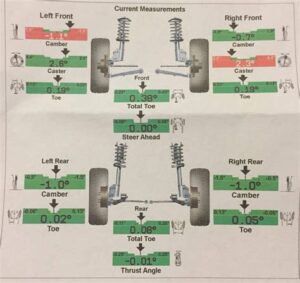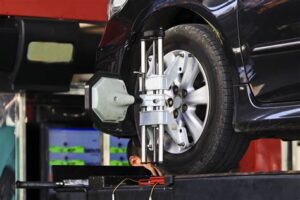When it comes to the safety and performance of your vehicle, few aspects are as crucial as proper car suspension alignment. A well-aligned suspension system not only ensures a smoother ride but also enhances tire longevity and fuel efficiency. In this article, we will explore the significance of maintaining accurate suspension alignment, delve into common signs indicating your vehicle may be out of alignment, and outline the steps to achieve optimal setup. We’ll also discuss the performance benefits of regular alignment maintenance and provide answers to frequently asked questions. Whether you’re a seasoned car enthusiast or a casual driver, understanding the essentials of car suspension alignment can lead to a safer, more enjoyable driving experience. Join us as we examine everything you need to know about this vital vehicle service.
Understanding Car Suspension: Importance of Proper Alignment
Proper alignment of your car suspension is critical for the overall performance and safety of your vehicle. Misalignment can lead to uneven tire wear, decreased fuel efficiency, and compromised handling. Therefore, understanding the significance of maintaining correct suspension alignment is crucial for any vehicle owner.
When your vehicle’s suspension is properly aligned, it ensures that all four tires make contact with the road evenly. This contact is essential for optimal traction, stability, and control while driving. Without proper alignment, the following issues may arise:
| Issue | Effect |
|---|---|
| Uneven Tire Wear | Shortened tire lifespan and increased replacement costs. |
| Poor Handling | Reduced steering control and increased risk of accidents. |
| Increased Fuel Consumption | Higher costs at the pump due to inefficient aerodynamics and tire performance. |
Moreover, proper alignment affects your vehicle’s ability to absorb shocks from the road, enhancing ride comfort for both drivers and passengers. This results in a smoother ride and contributes to the longevity of your vehicle’s suspension components. In conclusion, maintaining the correct alignment in your car suspension is not just about enhancing performance; it’s also a crucial aspect of ensuring safety on the road. Regular maintenance and alignment checks can save you from future headaches and financial burdens.
Common Signs Your Car Needs Suspension Alignment
Maintaining proper car suspension alignment is essential for a smooth driving experience and overall vehicle performance. Ignoring misalignment can lead to various issues, including uneven tire wear and compromised handling. Here are some common signs that indicate your car might need suspension alignment:
- Uneven tire wear: If you notice that one side of your tires wears down faster than the other, it could be a sign of misalignment.
- Pulling to one side: If your car tends to drift or pull to the left or right while driving on a straight road, alignment issues could be the culprit.
- Steering wheel off-center: When your steering wheel is not centered while driving straight, it’s often a clear indication that the wheels need realignment.
- Steering wheel vibrations: If you experience vibrations in the steering wheel, it may signal a problem with alignment or suspension parts.
- Increased difficulty in steering: Struggling to steer your car can indicate a misalignment that needs addressing to ensure safe handling.
Being aware of these signs can help you take early action to realign your car’s suspension, ultimately enhancing performance and prolonging tire life.
How Alignment Affects Your Car’s Suspension Performance
Proper car suspension alignment is crucial for optimal vehicle performance and handling. When your car’s suspension is aligned correctly, it ensures that all four wheels are pointing in the right direction, providing stability and control. Misalignment can lead to various performance issues that not only affect the driving experience but can also cause premature wear on parts of your vehicle.
One of the key ways alignment impacts performance is through tire wear. When suspension components are misaligned, it leads to uneven tire wear. This not only shortens the lifespan of your tires but can also result in decreased traction and grip on the road. Over time, this may compromise safety, particularly in adverse weather conditions.
Additionally, the alignment of your car suspension directly influences ride comfort. A well-aligned suspension system absorbs bumps and imperfections on the road more effectively. If the alignment is off, the car may experience a rougher ride, leading to driver and passenger discomfort. Poor alignment can also contribute to increased fuel consumption, as the engine has to work harder to compensate for the drag caused by misaligned wheels.
Another important aspect is steering responsiveness. Proper alignment ensures that when you turn the steering wheel, the car responds quickly and accurately. Misalignment can create a lag in responsiveness or make the vehicle feel unstable during turns, which can be dangerous, especially at high speeds.
Furthermore, car suspension alignment affects the vehicle’s braking performance. A misaligned suspension can lead to uneven braking pressures across the wheels, which may increase stopping distances and reduce overall braking efficiency. This inconsistency can heighten the risk of accidents, particularly in emergency situations where effective braking is essential.
Maintaining proper alignment of your car suspension is essential not only for ensuring the vehicle’s effective operation but also for enhancing safety and comfort. Regular checks and timely adjustments can significantly improve your driving experience and extend the lifespan of your car’s suspension components.
Steps to Achieve Perfect Car Suspension Alignment
Achieving perfect car suspension alignment is essential for optimal vehicle performance, safety, and tire longevity. Follow these steps to ensure that your suspension system is aligned correctly:
- Inspect Suspension Components: Before beginning the alignment process, inspect all suspension components for wear and damage. Check ball joints, bushings, and tie rods for any signs of deterioration.
- Check Tire Pressure: Ensure that all tires are inflated to the manufacturer’s recommended pressure. Uneven tire pressure can affect alignment readings.
- Use an Alignment Tool: Employ an alignment tool or visit a professional service that uses advanced equipment to measure camber, caster, and toe angles.
- Adjust Camber Angle: The camber angle refers to the tilt of the wheels from the vertical. Adjust this angle to ensure it meets the manufacturer’s specifications, which will help with even tire wear and improved handling.
- Adjust Toe Settings: The toe setting determines whether the tires point inward or outward. Adjust the toe angles to achieve proper alignment. Generally, the ideal toe-in can help with stability and handling.
- Check Caster Angle: The caster angle affects steering efforts; maintaining a proper caster angle can assist with vehicle stability and ride comfort. Ensure it’s within the recommended limits.
- Test Drive: After making adjustments, take the vehicle for a short test drive. Pay attention to handling, steering response, and any vibrations. If issues persist, repeat the alignment process.
- Regular Maintenance: Schedule regular alignment checks, especially after any significant suspension repairs or if you notice signs of misalignment.
By following these steps, you can maintain proper car suspension alignment, contributing to improved safety, comfort, and vehicle performance.
Benefits of Regular Car Suspension Alignment Maintenance
Maintaining proper car suspension alignment is crucial for a variety of reasons that directly impact both the performance of your vehicle and your overall driving experience. Here are some key benefits of regular car suspension alignment maintenance:
- Improved Handling and Safety: Proper alignment ensures that your car handles correctly, providing better control and stability on the road. This can significantly reduce the risk of accidents caused by misaligned wheels, especially during emergency maneuvers.
- Extended Tire Life: Regular suspension alignment helps prevent uneven tire wear. When your wheels are properly aligned, the tires make better contact with the road, prolonging their lifespan and reducing the need for premature replacements.
- Increased Fuel Efficiency: A well-aligned suspension allows your vehicle to move more efficiently, resulting in less rolling resistance. This can lead to improved fuel economy, saving you money at the pump over time.
- Enhanced Ride Comfort: Proper alignment helps distribute the weight of your vehicle evenly, leading to a smoother ride. Passengers will appreciate the improved comfort, especially on long trips.
- Prevention of Additional Damages: Neglecting alignment can lead to additional wear and tear on suspension components, steering systems, and other related parts. Regular maintenance can help you avoid costly repairs down the line.
Regular maintenance of your car suspension alignment not only enhances the performance and safety of your vehicle but also contributes to overall cost savings over time.
Frequently Asked Questions
What is car suspension alignment?
Car suspension alignment refers to the adjustment of the vehicle’s suspension system to ensure that the wheels are perpendicular to the ground and parallel to each other.
Why is suspension alignment important?
Proper suspension alignment is crucial for safe handling, improved tire life, better fuel efficiency, and a smoother ride.
What are common signs that my car needs suspension alignment?
Common signs include uneven tire wear, steering pulls to one side, a crooked steering wheel, and a rough or bumpy ride.
How often should I get my car’s suspension aligned?
It is generally recommended to have your suspension alignment checked at least once a year or whenever you notice any alignment issues.
Can I perform a suspension alignment myself?
While some aspects of suspension alignment can be checked at home, it usually requires specialized equipment and expertise, so it is best done by a professional.
What factors can cause suspension misalignment?
Factors that can cause suspension misalignment include hitting potholes, curb impacts, wear and tear on suspension components, and improper installation of parts.
Does suspension alignment affect fuel efficiency?
Yes, improper alignment can increase rolling resistance, which can negatively impact fuel efficiency, leading to higher fuel costs.
